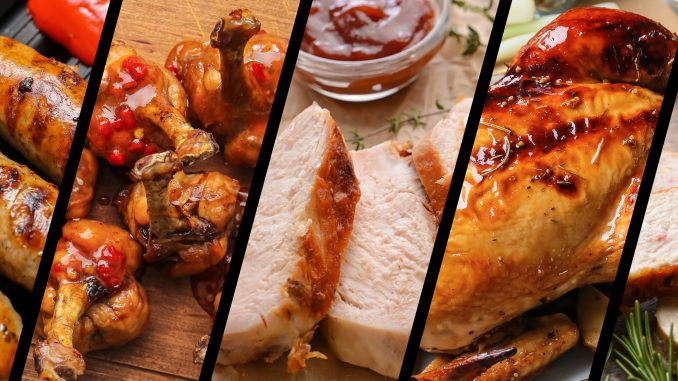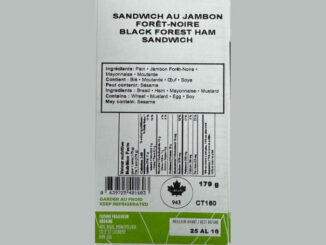
As consumers seek products that are as unadulterated as possible, natural meat has been in the spotlight.
According to the U.S. Department of Agriculture, “products labeled as natural are products containing no artificial ingredients or added colors and only minimally processed. Minimal processing means that the product was processed in a manner that does not fundamentally alter the product. The label must also include a statement explaining the meaning of the term natural (such as “no artificial ingredients; minimally processed”)”.
In the 52 weeks ending June 19, 2021, natural deli meat sales in the U.S. totaled more than $328 million, an increase of 9.5% from the year prior, according to Chicago-based Nielsen IQ.
“What constitutes natural meat depends on the commitment of each producer to green practices and positive animal welfare practices,” says Kate Whittum, sales manager for the U.S., Redondo Iglesias USA Inc., Bayonne, NJ. “At a minimum, there would be no growth hormones and minimal antibiotic use in the raising of the animals. On a similar level in the production of the deli meats, the first level would be stopping the use of preservatives.”
Burgeoning Popularity
Natural meat is on trend due to consumers seeking clean labels and minimal processing.
“You are seeing delis going from 10-15% of the mix [being natural meats] to 40% plus,” says Gil Perales, marketing director, Olli Salumeria, Oceanside, CA.
With the increasing popularity of charcuterie items, natural meats have been trending in delis.
“Natural meats, particularly within the dry-cured specialty foods segment, have long led the incremental revenue growth in large part due to the emphasis on using natural ingredients,” says Deanna Depke, marketing manager, Volpi Foods, St. Louis. “As shoppers become more curious about what is and is not in their foods, adoption of all natural and claims around animal welfare have increased for good reason.”
Retailers embrace emerging shopper desires for more premium options around all natural assortments.
“Just look to linear square footage of a deli devoted to natural meats and charcuterie versus that set even five years ago,” Depke says. “Buyers have tripled or quadrupled the amount of space devoted to these items because that’s what their shoppers are searching for.”
The trend toward natural meats in Europe has had an impact on imported meats in U.S. delis.
“What we have seen from Europe is a trend toward switching to natural meats,” says Giulia Angoscini, business development analyst for Italian Specialty, Atalanta, Elizabeth, NJ. “In general, the U.S. consumer has been more educated, reading the labels and nutritional information so all natural is becoming more relevant.”
When we talk about natural meats, it’s about the nutritional deck—no preservatives, sustainability and animal welfare.
“Supermarkets are now explaining about the life of animals; it’s a micro discussion,” Angoscini says. “Natural meats are 100% free of nitrates and nitrites, and there is a trend of suppliers and producers getting rid of those ingredients.”
There are specific differences when looking at these meats and what they’re comprised of.
“Although there are many products with no artificial nitrates and nitrites, there are ingredients that contain these additives,” Angoscini says. “There are chemical and natural preservatives but there is really no difference. It’s not just replacing chemical ingredients with natural ones but getting rid of them altogether.”
The bottom line is natural meats are becoming the norm, not the exception, in the deli department of supermarkets in the past few years.
“Four or five years ago, producers were offering a conventional line and an add on smaller, all natural line,” says Whittum at Redondo Iglesias USA. “As natural products’ SKUs increase, the conventional versions are dropping off.”
In the past, preservatives were used as part of Redondo’s food safety program because the cold chain could not be ensured in bringing product to market; then there was no impetus to change its methods. Now with improvements in logistics, Redondo Iglesias has been moving its whole line to be preservative free.
La Quercia, LLC., has seen growth entirely in the natural meat segment.
“This segment has grown a lot, supported by foodservice and restaurants that were spotlighting brands like ours on menus,” says Herb Eckhouse, president and founder, La Quercia, LLC., Norwalk, IA. “Especially younger people are very concerned with the food they’re eating, including where it’s grown, how it’s made, and they’re also willing to spend more money.”
Natural meats are premium products with a premium cost, yet the parameters for natural are a bit loose.
“That’s a big problem for consumers,” Eckhouse says. “A product can be natural or uncured, but that doesn’t refer at all to how animals are raised. Meat itself may be a commodity but how it’s processed allows a natural label claim through FDA.”
Ideally, certain standards should be met—no crates, no cages, antibiotic free, third party auditing groups that do farm inspections and rate animal husbandry practices, certified by third party groups (such as the American Humane Society, Global Animal Partnership and Animal Welfare Association). Still, there is no uniform industry standard.
“The pork industry has tried to create a set of humane practices for raising and transporting animals, with minimum training for those involved with it,” Eckhouse says. “But it is behind the scenes; consumers won’t find details on this on the label.”
The Offerings
In terms of natural meats, charcuterie is a long-tenured trend that seems to only gain momentum.
“Demand surged during the lockdowns in 2020, and we have not seen it slow down,” says Depke at Volpi Foods. “Staples like prosciutto and soppressata are finding spaces at new dinner tables across the country.”
Last year Volpi debuted Eco-Pack across all pre-sliced meats. This material uses 70% less plastic than standard deli packs.
“Our All Natural, Raised Responsibly and Eco Pack components are a big part of who we are and how we resonate with modern day shoppers,” Depke says.
Volpi’s entire line is crafted from meat raised responsibly, slow aged without synthetic nitrates or nitrites and is gluten free. It is adding a Spanish-inspired sliced Jamon Serrano to the lineup that will be packaged in its signature Eco-Pack.
Atalanta’s natural product lines include COVAP-Esencia Unica from Spain and Tanara Culatta, dry cured prosciutto from Italy.
Redondo Iglesias natural deli meat products include imported dry-cured specialties that are high end.
“Removing nitrates and nitrites has reduced the shelf life on our whole leg formats from 18 to 12 months,” Whittum says. “For our sliced items, it has not had an impact since we give those items less shelf life as it is.”
In the last year, Redondo Iglesias has introduced its all natural production of its grass fed Jamon Iberico, which is aged three years. The company is switching all of its production to all natural/preservative free.
“Everything now hanging in our aging rooms is all natural except for our acorn-fed Iberico items,” Whittum says. “Redondo ages those items for over 48 months, so the production from four years ago is finishing its aging; everything else has transitioned.”
In striving to improve meat quality, La Quercia began with no confinement production and no antibiotics.
“We added organic right away, and then our next move was to specify breeds,” Eckhouse says. “It then evolved into acorn feeding, which is associated with superior dry cured ham. From that we moved into more outdoor raised animals. Lower stress equals better quality meat, and we’ve been working toward that for the last eight years.”
Natural and organic meat items have started to include the color green on their label to indicate that they are a healthier option, according to Jaline G. Isidor Horta, digital marketing director, Cibao Meat Products, Rockaway, NJ.

Differentiating on the Shelves
Depke at Volpi Foods recommends creating a natural meat destination for deli shoppers to bring added attention to this category.
“Shoppers are searching for these items in every store, and rather than make them hunt through the aisles, clearly define your specialty set and use that as a differentiator,” she recommends. “It is also imperative that merchants keep top of mind these items are part of larger table spreads to add value to your shoppers through merchandising with produce, cheese, wine and bread.”
Retailers need to differentiate natural meats, as these are premium to super premium items. “As such, they should be merchandised this way,” says Eckhouse at La Quercia. “We can provide information on the packaging and highlight characteristics but retailers need to highlight those differences in their display or position natural meats in a different section, since the price difference can be substantial.”
These products can be effectively marketed by having commercials talking about the benefits of natural meat.
“These items can be cross merchandised with funny slogans that can have a double meaning but still get the point across as to the benefits,” says Isidor Horta at Cibao.
Items that work well in conjunction with natural meat include produce, cheese and items for charcuterie boards.
“On the Italian side, Prosciutto di Parma and Prosciutto Cotto, which have a DOP designation and are all natural, should be included, as American consumers are understanding how to incorporate natural meats onto boards similar to cheese versions,” says Angoscini at Atalanta. “The salumi trend is catching up with what’s happening with specialty cheese, and uncured bacon and ham are up and coming.”
Although there is the perception that the term ‘natural’ is overused and has lost credibility over time, it has become a more accepted moniker for meats without preservatives.
“This has helped revamp the claim, making it more credible moving forward,” Angoscini says. “In the future, I see the integration of all natural meats into the discussion about sustainability and animal welfare, as those topics are getting more connected. Hopefully, the next step is sustainable packaging, but we’re not there yet because it’s very expensive.”
Manufacturers predict more and more natural meats will dominate the selection in supermarket delis.
“However, because of their decreased shelf life and increased costs, there will continue to be a place for conventional deli meats for quite some time,” says Whittum at Redondo Iglesias US. “The divide will break along the position of the retail outlet in the marketplace.”
The demand trajectory for natural dry cured meats will continue to grow as household adoption rates rise.
“Although 2020 growth will be difficult to beat, we are focused on harnessing the increased demand and developing new, convenient ways for shoppers to explore the category,” says Depke at Volpi Foods. DB



